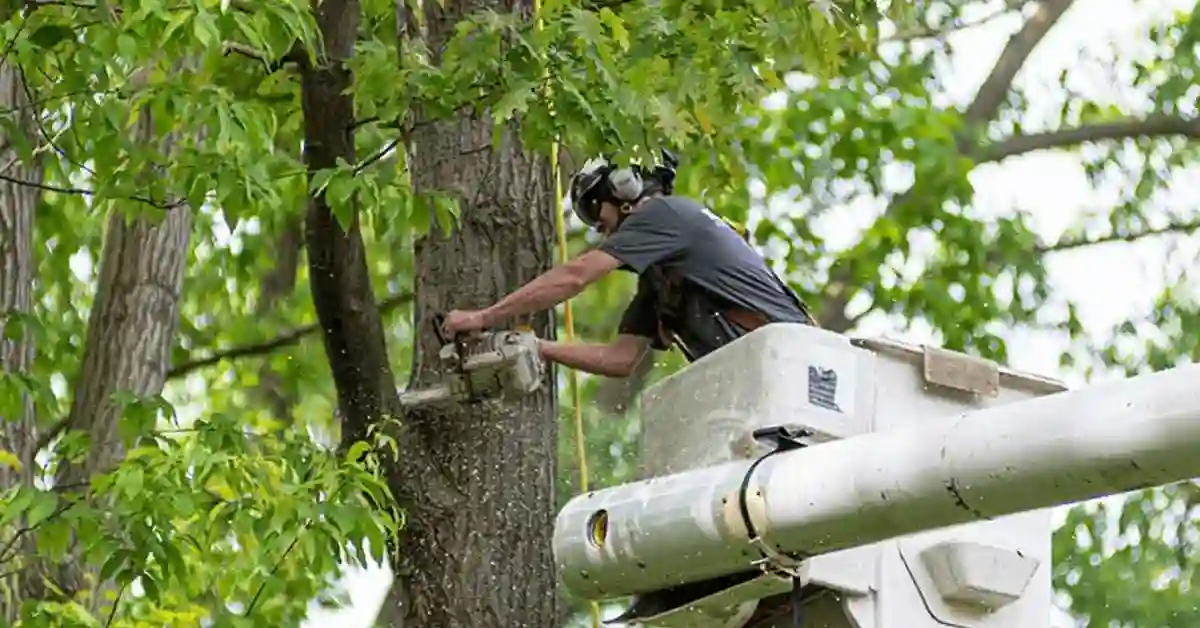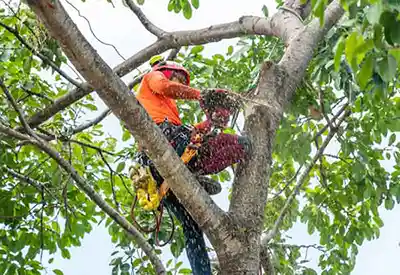
Venturing into the tree industry requires a fundamental understanding of what the operations entails. To start a tree business, you must offer services like cutting down trees, trimming, stump grinding, and managing pests and diseases. This business is critical in ensuring public safety, maintaining landscape beauty, and enhancing ecological balance.
To work with trees, you must know tree biology, disease diagnosis, and safe techniques. Not just cutting trees, it's about understanding and handling tree problems effectively. You should also learn what it takes to become a certified Arborist. Understanding these aspects will help you provide a high standard of service to your clients, maintain their landscapes health, and keep their properties safe.
Steps to Starting a Tree Business
1. Essential Skills and Certifications
To provide professional tree services, you need to acquire certain skills and certifications. People acquire technical skills like tree climbing, pruning, and removal through experience or specialized training.
Knowledge about tree biology, disease management, and pest control is also crucial. Such knowledge will allow you to diagnose tree health issues accurately and provide appropriate treatments.
Obtaining a Certified Arborist credential from the International Society of Arboriculture (ISA) or similar bodies will significantly boost your credibility. This certification proves your knowledge and commitment to the highest arboricultural standards.

2. Developing a Detailed Business Plan
A detailed tree business plan is essential for your tree trimming business. This should cover all key aspects of your business, including:
Business Objectives
Define clear and measurable objectives for your tree service business. These objectives should provide direction and serve as benchmarks for measuring your business performance.
Marketing Strategy
Outline your approach to attracting and retaining customers. Your marketing strategy should consider target market needs, competitive advantages and the most effective channels for reaching your customers.
Competitive Analysis
Identify your main competitors, their strengths and weaknesses, their market share, and how you can differentiate your services. Understanding your competitors will help you position your tree service company strategically.
Operation Plan
When starting an arborist business, describe how your company will operate. This should cover your service provision, staffing, equipment, and tree care business processes.
Financial Projections
Provide detailed financial projections for your business. This should include your estimated startup costs, operating expenses, revenue forecasts, and profit targets.
Visit our Tree Software to help manage your business
3. Legal Requirements and Compliance
You must adhere to all legal requirements to operate your tree business legitimately. This includes obtaining necessary permits and licenses from local and state authorities, registering your business, and purchasing the appropriate insurance to cover potential liabilities.
Ensure that your operations comply with safety regulations and industry standards. This is crucial not just for legal compliance, but also for maintaining the safety of your workers and customers.
4. Investing in the Right Equipment
The right equipment will make your tree services more efficient and safer. You will need tools like chainsaws, loppers, and pruning shears for tree work. Safety gear such as helmets and harnesses is important. For bigger jobs, consider using heavy machinery like bucket trucks or cranes.
Invest in high-quality, durable equipment to reduce breakdowns and replacement costs. Good equipment costs more at first, but saves money in the long run by working better and needing less maintenance.

5. Building a Strong Team
Your team is crucial to your tree business. Assemble a team of well-trained, dedicated individuals who can deliver high-quality work consistently.
Ensure that your team understands and adheres to safety protocols. Training and development can help your team improve skills and stay current on new techniques and safety standards.
6. Effective Marketing and Branding Strategies
Your tree advertising ideas and branding strategies will play a key role in attracting customers and establishing your reputation. Use traditional marketing methods such as print ads, billboards, and word-of-mouth. Also, utilize digital strategies like SEO, social media, and email marketing. Always ensure your marketing messages align with your brand identity and effectively communicate the unique value your business provides.
Your branding should be consistent across all channels and touchpoints. Make sure your logo, tree removal business cards, website, and social media reflect your professional tree cutting business. Your brand should be memorable and show the quality of your work.
7. Offering Exceptional Customer Service
Superior customer service is a powerful difference in the tree industry. This starts with a comprehensive consultation, where you understand the customer's needs and provide expert advice. During service, keep communication open to inform and make customers comfortable with the process.
Check in with customers after providing service to ensure they are happy and address any issues they may have. Demonstrate to customers that you value their feedback and are committed to resolving any issues promptly and professionally.
Satisfied customers can help grow your tree care company by recommending it to others and leaving positive reviews.
8. Sustainability and Growth
Sustainable growth should be at the forefront of your business strategy. Regularly review and refine your business processes to increase efficiency, reduce costs, and improve service quality.
Invest in better tools and training for your team to stay ahead in industry trends and technology. This will enable you to provide a broader range of services and cater to a wider customer base.
Also, always keep an eye on your market. Monitor market trends, changes in customer needs, and competitor activities. This information can help you discover new opportunities for growth. You can expand into new areas, introduce new services, or reach out to new customers.
9. Conclusion
Starting a tree service business requires careful planning. You need to gain the right skills and meet legal requirements. It is important to invest in the right equipment. Building a skilled team is also essential.
Finally, you must use effective marketing strategies. By following these steps, you can establish a profitable and sustainable company.
